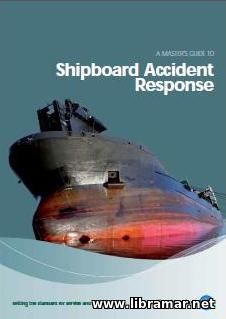 The ultimate purpose of the present guide developed and released by The Standard Guide and belonging to the Master's Guide series, was to list, in a simple and easily understandable terms, all actions that shall be taken by the Master of the ship when there is a problem or an accident that may potentially result in claims against the ship manager or owner.
The document is actually concerned only with the P&I, i.e. Protection and Indemnity risks; it contains the advice and instructions on how the owner's interests can be protected after the problem has arisen. Please not that this paper is not intended to replace in any way any standing instructions on the ship accidents, any emergency response procedures or reporting procedures established by your company.
The booklet starts with the Basic Advice chapter giving quite clear advice on what shall and what shall not be done, with the content arranged in two columns - Always and Never. The document provides advice for avoidance of the ship accidents, proper collection of the evidence, bills of lading, pollution, property damage, ship security and stowaways, general average and many other aspect commonly associated with the accident response.
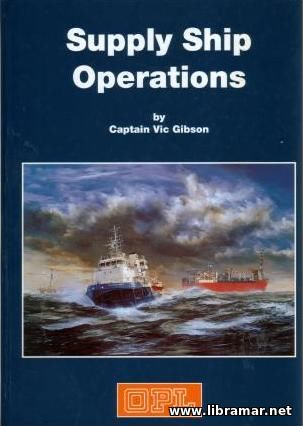 At the turn of the XXI century the Southward movement of oil exploration across the Mississippi delta made the eventual search for hydrocarbons under the sea inevitable, and in 1923 the first offshore exploration took place off the coast of Louisiana state. The drilling derricks were set on platforms which in turn were supported by the piles that were driven into the mud of the Mississippi delta.
And, it was not long before subject structures were erected just off the shore, and by 1930 the oil companies were using derricks mounted on barges which were sunk to the seabed on the location. The supply vessel as a ship type is unique in that it did not develop from any other sort of craft, except that in common with all other ships it has a hull, engines and a bridge...
This book written by Captain Vic Gibson is dedicated to the operations performed by the offshore supply vessels. It starts with the historical overview o the development of the supply ships and requirements applicable to them, followed by the chapters addressing the oil fields and drilling rigs, ship handling and moving of the semi-submersible and jack-up, i.e. self-elevating offshore drilling rigs, special offshore activities, towing and cargo transportation, standing by and emergency services, etc. A very useful book for all people engaged in the offshore supply activities.
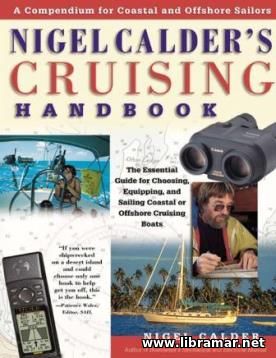 According to the numerous reader reviews, this publication is maybe the most helpful when used by those involved in the selecting the cruising sailboats and their subsequent equipping. It will be useful and practical to both offshore and coastal cruisers who will find inside the valuable information relating to the most important aspects, carefully worked and presented by the recognized expert in the field.
The material contained in the book has been arranged in two big sections. The first section covers the tabular method commonly applied for evaluating the stability of the cruising boat to check if the boat in question is suitable for sailing’ in addition, it addresses several ideas for the arrangement and layout on the deck together with the practical tips on choosing and configuring the boat systems and installation of the associated gear.
The second section of the publication deals with the boat handling and navigational skills; the anchoring, mooring and weather understanding matters have been addressed. The book is going to show the readers how they should choose, equip, sail and navigate their boats, and as such shall be treated as an indispensable reference on board every single cruising boat.
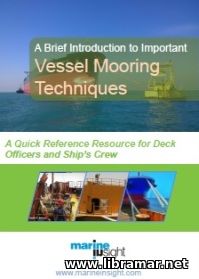 As it comes quite clear from the title of this publication prepared and released by the MarineInsight team, it was designed to provide some introduction to the basics of the ship mooring techniques. The book will serve as a reference tool to be used by the ship crew members and deck officers. The booklet has been arranged in seven major chapters.
The first one is introductory, explaining the process of mooring the vessel in general. The second chapter of the book is dedicated to the so-called Mediterranean mooring of the vessel, while the following one is about the Baltic mooring. Obviously, each of them has its own advantages and disadvantages. The remaining chapters of the publication deal with the single- and multiple point mooring of vessels, ship-to-ship mooring, and also what is the running and standing mooring.
In short, this training book is an excellent reference source for every person involved in subject operations, either in planning or in actual mooring. The book also provides readers with the relevant terminology and definitions that all crew members and deck officers shall be aware of in order to perform the mooring safely and effectively. We really recommend to have this booklet readily available on board.
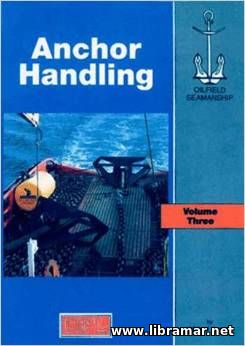 This technical publication was prepared by Michael Hancox and subsequently published by Oilfield Publications Ltd.; it belongs to the famous "The Oilfield Seamanship" series of publications. As the name of the document implies, this one is dedicated to the anchor handling techniques, i.e. to the one of the most important sides of the commonly conducted offshore operations.
Apart from the opening introductory chapter, the book includes parts covering equipment layout and function, running and retrieving anchors, rigging for anchor handling operations, handling chains, support mooring operations, bat-barge cooperation, equipment maintenance, safety procedures etc.
The publication is expected to be of great practical use to ship Masters and, in fact, every crew member involved in the anchor handling operations at the oilfields as it describes in detail all related operations from the AHTS view point offering quite fresh look at this matter. The content of the volume is covering the majority of the offshore operations but it should be noted that the methods that have been described here are not only considered means some particular aim. Numerous shortcuts provided by the author will definitely be appreciated by all participants of the subject activities.
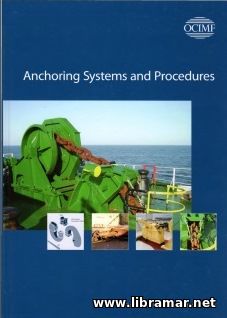 This is the revised edition of the official OCIMF publication, superseding the original release of their "Anchoring Systems and Procedures for Large Tankers". It will provide reader with all necessary guidance and relevant recommendation to promote the safe operation as well as satisfactory operational performance of the anchoring systems normally installed on board ships.
The revision of the publication was considered necessary due to the significantly increased number of incidents that involved failures in windlass motors, anchor losses and associated injuries of the crew members. That is why the decision was made by the experts to get the content of the first edition revised and make it reflect the improved information related to the effective anchoring practices and also to recognize the developments made in the field of anchor systems in the past years.
The authors of the volume have highlighted all design capabilities together with the associated limitations imposed on these systems and equipment with the ultimate intention to enhance the operational safety. The guidance provided in the book will apply to vessels the vessels of all types and sizes and will be useful to their crew members.
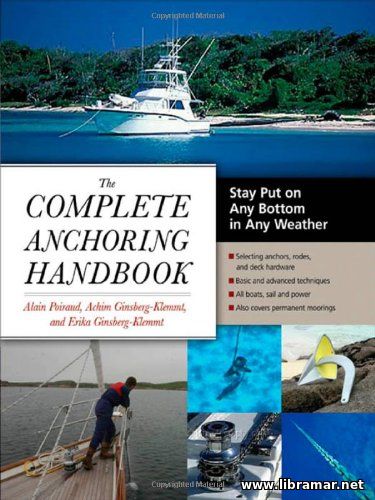 The readers have found this volume to be very practical and informative. It is a nearly perfect all round book covering all aspects of anchoring, including different types of anchors used, types of bottoms, rode types etc. The authors have applied a scientific approach to this quite difficult subject and this resulted in a very useful and readable content and gained popularity to their work which shall definitely be treated an essential book for all those owning or planning to own a boat - it will provide readers with the information required to make a reasonable choice when performing a replacement of the insufficient anchors and chains.
The content is well research and gives detailed information; it is based on the engineering analysis and features valuable contributions from the internationally recognized experts in anchoring. The authors emphasize the best established methods for the safe and effective anchoring. They describe such important aspects of the anchoring as selection and sizing of the anchors and components, connection of those components with no weak points, physical forces that act on a boat, the sea bottom and ground tackle... A real treasury for the boaters.
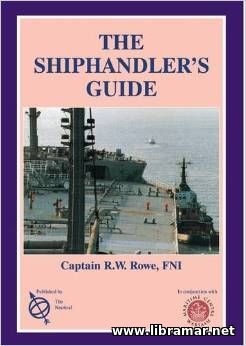 This Guide was prepared by the Nautical Institute to provide the shipping industry people with the discussion on the behavior of the vessel under particular circumstances addressing all difficulties that are commonly encountered at sea. The volume shall be used as an aid to the ship handlers worldwide.
The author of the publication has managed to maintain a proper balance between the theoretical basis and practical application if the theory in order to minimize the complex math data keeping it at the simplest level understandable for the people without much experience. The book is aimed at ship masters and navigating officers as well as at the tug masters and pilots.
Starting with the general introductory information, the book the covers such important aspects as the slow speed control and effects of wind acting on the vessel, transverse thrust and interaction, turning and tidal effects, work of the bow thrusters and turning, twin screw work and use of tugs, dredging anchors and others. Numerous photographs and informative data tables supplement the text and make it easier to understand. The book will be useful even for the students making their first steps in maritime world.
« 1 2 ... 10 11 12 13 14 15 » |







